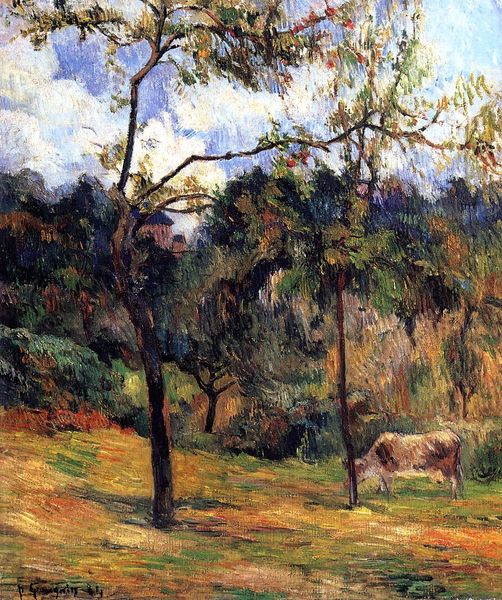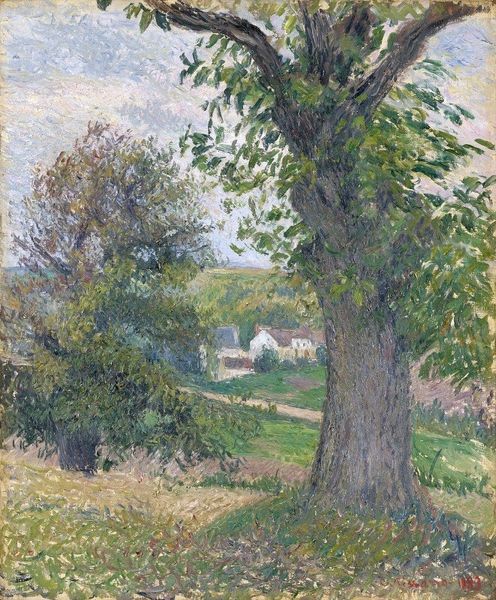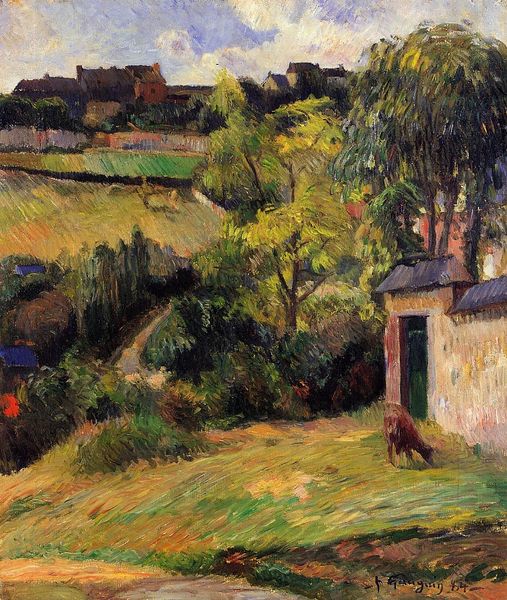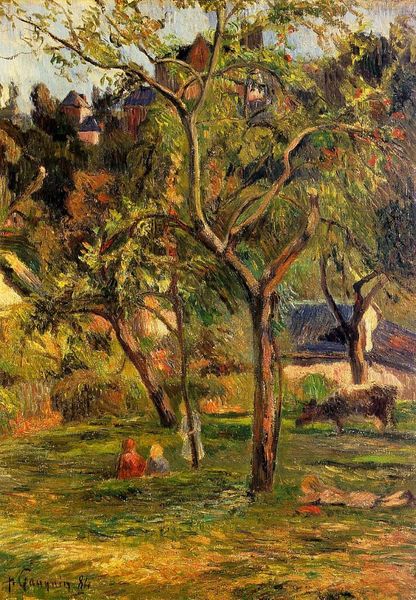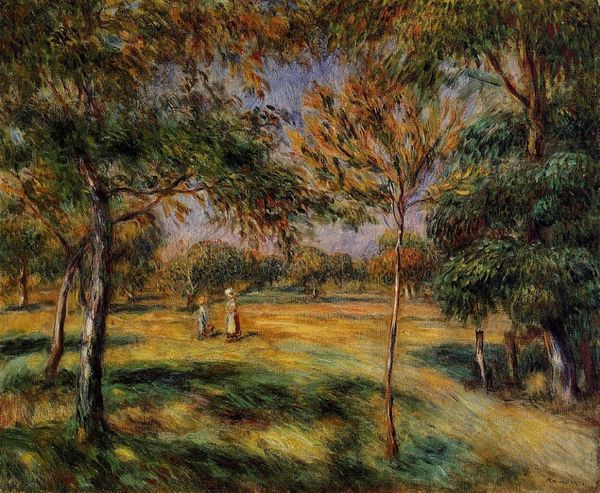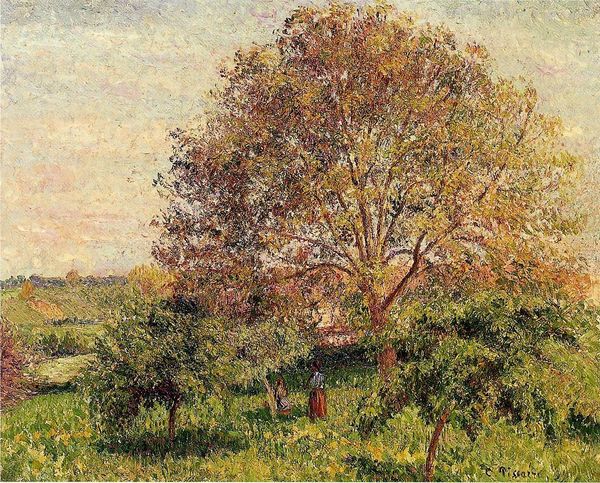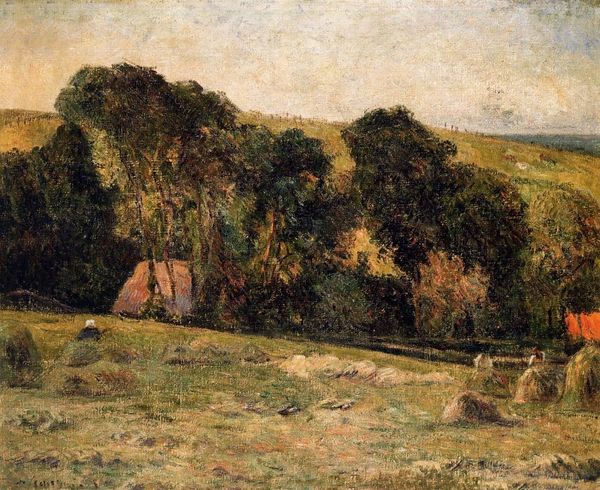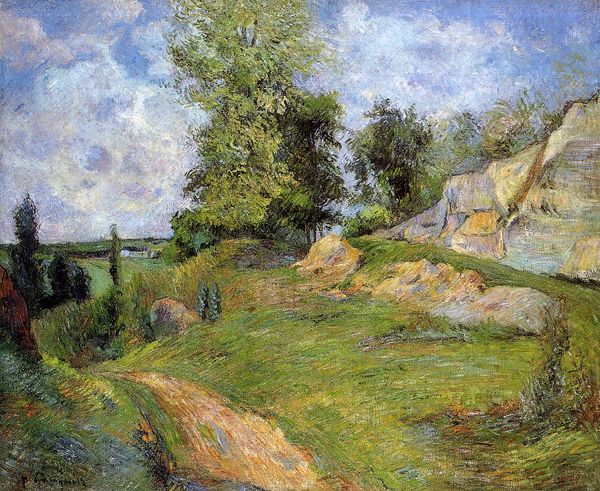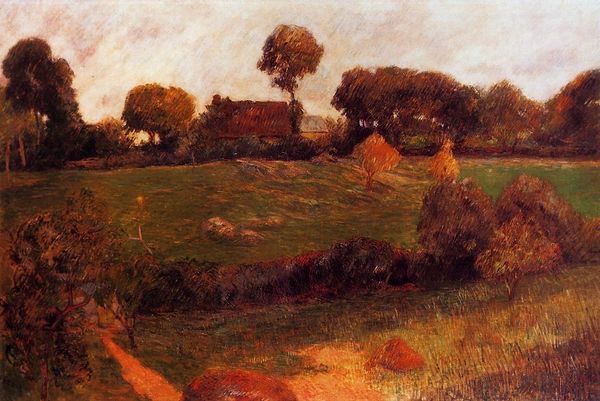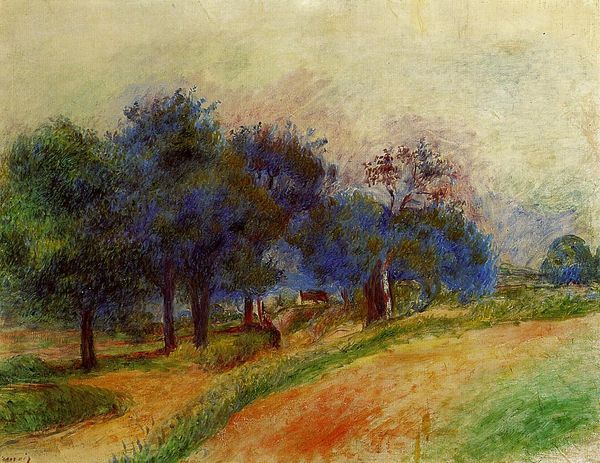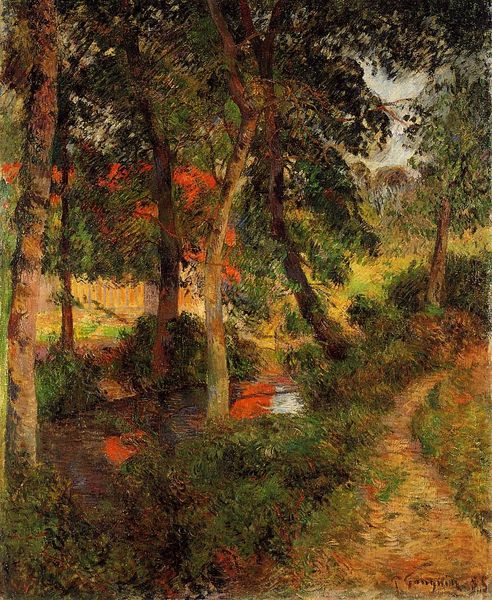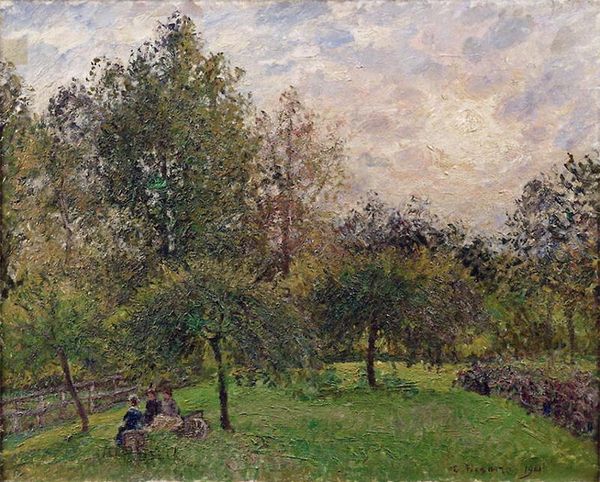
painting, plein-air, oil-paint
#
painting
#
plein-air
#
oil-paint
#
landscape
#
figuration
#
oil painting
#
genre-painting
#
post-impressionism
Copyright: Public domain
Curator: It feels like the heat of summer, almost oppressively so. A kind of hazy laziness hangs over everything. Editor: We're looking at Paul Gauguin's "Young woman lying in a grass," painted in 1884. It's an oil-on-canvas piece done in plein air, so Gauguin was likely working directly in this environment. I'm interested in the physical effort and resources to produce art on location at this time. Curator: The figure almost disappears into the verdant grass. The woman seems completely at peace, maybe even lost in thought. Does this work possess visual allusions or motifs to similar contemporaneous figural depictions? Editor: It's curious to consider Gauguin's engagement with materials and methods. Take the vibrant colours—investigating the supply and cost of such pigments at the time can be an interesting line of inquiry, can't it? The work provides interesting evidence for thinking about trade networks involved with procuring materials and techniques used at this period. Curator: Yes, fascinating when one consider the broader Post-Impressionist use of industrial advancement in pigments. Yet, I am especially struck by the color. The pinkish dress sharply contrasts the intense, rich green of the meadow. One feels it's laden with coded sensuality, reminiscent of the pastoral scenes in Renaissance paintings but filtered through a 19th-century lens. It feels like an intimate glimpse into a private moment. Perhaps representing, on some level, lost innocence or romantic escape. Editor: I'd say that even this "intimate glimpse" is tied to Gauguin's production process, the social framework that let a bourgeois artist afford all those tubes of lush, commercially produced paint, and even the ready-made canvas upon which he worked, each representing layers of material processes. His stylistic choices come out of the context of making art, informed and transformed by manufacturing capabilities and market structures. Curator: So we see through materiality, the symbolic representations embedded in this composition. Both create a dynamic piece open to interpretation. Editor: Absolutely. By analyzing these aspects in concert, we glean fresh understandings of the painting and its era.
Comments
No comments
Be the first to comment and join the conversation on the ultimate creative platform.
